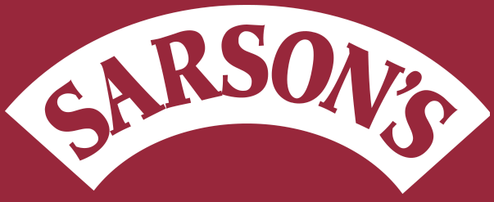Basmati Rice
From Wikipedia, the free encyclopedia
Basmati (Hindi: बासमती, Urdu: باسمتی, Punjabi: ਬਾਸਮਤੀ, Bengali: বাসমতী, Tamil: பாஸ்மதி, Kannada: ಭಾಸ್ಮತಿ, Oriya: ବାସୁମତୀ, Telugu: బాస్మతి) is a variety of long grain rice grown in India, Bangladesh, and Pakistan, notable for its fragrance and delicate, nuanced flavour. Its name means "the fragrant one" in Sanskrit, but it can also mean "the soft rice". India is the largest cultivator, consumer and exporter of this rice; it is primarily grown through paddy field farming in the Punjab region.The grains of basmati rice are longer than most other types of rice. Cooked grains of Basmati rice are characteristically free flowing rather than sticky, unlike most other kinds of long-grain rice. Cooked basmati rice can be uniquely identified by its fragrance. In addition to normal (white) Basmati rice, brown basmati is available, although uncommon.
Basmati rice sells at a higher price than other varieties.[citation needed]
Contents |
Flavour
Basmati rice has a typical pandan-like (Pandanus fascicularis leaf) flavour caused by the aroma compound 2-acetyl-1-pyrroline.[1] Basmati rice is often used for cooking biryani, pulao, and sometimes kheer.Varieties and hybrids
There are several varieties of basmati rice. Traditional types include basmati 370, basmati 385, and basmati Ranbirsinghpura (R.S.Pura).Scientists at Indian Agricultural Research Institute, Delhi, genetically modified basmati to produce a hybrid semi-dwarf plant which had most of the good features of traditional basmati (grain elongation, fragrance, alkali content). This hybrid was called Pusa Basmati-1 (PB1; also called "Todal", because the flower has awns); crop yield is up to twice as high as traditional varieties. Fragrant rices that are derived from basmati stock but are not true basmati varieties include PB2 (also called sugandh-2), PB3, and RH-10.
List of approved varieties
Punjab, Kernel Basmati Dehradun, Safidon, Haryana, Super basmati, Kasturi (Baran, Rajasthan), Basmati 198, basmati 217, basmati 370, basmati 385, basmati 386, Bihar, Kasturi, Mahi Suganda, Pusa, Ranbir, and Taraori.[2] Some non-traditional aromatic crosses with basmati characteristics are marketed under a Sugandh designation.[3][4]Adulteration
Difficulty in differentiating genuine basmati from other types of rice and the significant price difference between them has led fraudulent traders to adulterate basmati rice with crossbred basmati varieties and long-grain non-basmati varieties. In Britain, the Food Standards Agency found in 2005 that about half of all basmati rice sold was adulterated with other strains of long-grain rice, prompting rice importers to sign up to a code of practice.[5] A 2010 U.K. test on rice supplied by wholesalers found four out of 15 samples had cheaper rice mixed with basmati, and one had no basmati at all.[6]A PCR-based assay similar to DNA fingerprinting in humans allows adulterated and non-basmati strains to be detected, with a detection limit from 1% adulteration upwards with an error rate of ±1.5%.[citation needed] Exporters of basmati rice use "purity certificates" based on DNA tests for their basmati rice consignments.[7] Based on this protocol, which was developed at the Centre for DNA Fingerprinting and Diagnostics, the Indian company Labindia has released kits to detect basmati adulteration.[8]
Patent battle
In September 1997 Texas, USA company RiceTec was granted U.S. Patent No. 5,663,484 on "basmati rice lines and grains." The patent secures lines of basmati and basmati-like rice and ways of analyzing that rice. RiceTec, owned by Prince Hans-Adam of Liechtenstein, faced international outrage over allegations of biopiracy. It had also caused a brief diplomatic crisis between India and United States with India threatening to take the matter to WTO as a violation of TRIPS which could have resulted in a major embarrassment for the United States.[9] Both voluntarily and due to review decisions by the United States Patent and Trademark Office, RiceTec lost or withdrew most of the claims of the patent, including, most importantly, the right to call their rice lines "basmati."[10] A more limited varietal patent was granted to RiceTec in 2001 on claims dealing with three strains of the rice developed by the company.[11]Glycemic index
According to the Canadian Diabetes Association, basmati rice has a "medium" glycemic index (between 56 and 69), thus making it more suitable for diabetics as compared to certain other grains and products made from white flour.[12]See also
Footnotes
- ^ S. Wongpornchai, T. Sriseadka, S. Choonvisase (2003). "Identification and quantitation of the rice aroma compound, 2-acetyl-1-pyrroline, in bread flowers (Vallaris glabra Ktze)". J. Agric. Food. Chem. 51 (2): 457–462. DOI:10.1021/jf025856x. PMID 12517110.
- ^ foodstandards.gov.uk
- ^ "Sugandh" set to take on Thai Jasmine rice. The Hindu. Monday, October 13, 2003.
- ^ Two new aromatic rice for North-western plains. The Hindu. Thursday, October 2, 2003.
- ^ [1]
- ^ This is Leicestershire: Probe finds fake basmati
- ^ http://www3.interscience.wiley.com/cgi-bin/abstract/114280458/ABSTRACT and http://pubs.acs.org/cgi-bin/abstract.cgi/jafcau/2007/55/i20/abs/jf0714517.html
- ^ Basmati Testing - Basmati Verifiler Kit. Labindia.
- ^ Basmati Case Study
- ^ "Bid for patent for basmati rice hits a hurdle", The Hindu, November 5, 2006
- ^ "India-U.S. Fight on Basmati Rice Is Mostly Settled", The New York Times, August 25, 2001
- ^ Canadian Diabetes Associate - The Glycemic Index

